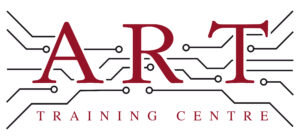Definition
Delamination is the separation of layers in a material, commonly found in printed circuit boards (PCBs). This fault occurs when the adhesive bond between layers fails, leading to a loss of structural integrity. Delamination can affect the performance and reliability of electronic components, making it a critical concern in electronics manufacturing and rework.
How It’s Used in the Industry
In electronics assembly, delamination can occur during the manufacturing process of PCBs, especially when layers are bonded together. Technicians must inspect PCBs for signs of delamination, which can manifest as visible bubbles or separations. During soldering, high temperatures can exacerbate this issue, making careful temperature control essential. For rework, identifying delamination is crucial as it can lead to faulty connections or component failures. Understanding delamination is vital for both trainees and seasoned professionals, as it impacts product quality and reliability in electronic devices.
History & Origins
Delamination became a significant concern in electronics manufacturing during the late 20th century as multi-layer PCBs became more common. The introduction of IPC standards, which outline best practices for PCB design and assembly, highlighted the importance of preventing delamination. Advances in materials technology, including improved adhesives and laminating processes, have also played a role in addressing this issue, ensuring greater reliability in electronic products.
Variations
There are several types of delamination, including interlayer delamination, which occurs between different layers of a PCB, and surface delamination, which affects the outer layer. Each type can result from different causes, such as moisture absorption or thermal stress. Understanding these variations is essential for technicians, as different methods may be required to diagnose and repair the issue effectively.
Modern Applications
Today, delamination is a critical consideration in the production and repair of PCBs, particularly in advanced assembly techniques like surface mount technology (SMT) and through-hole soldering. Ensuring that delamination does not occur is vital for meeting IPC standards and maintaining product quality and reliability. Training programmes now emphasise the importance of identifying and addressing delamination, making it a key topic for both new and experienced technicians.
Practical Tips & Training
When working with or inspecting for delamination, technicians should use visual inspection techniques and tools such as microscopes to identify potential faults. It’s essential to maintain proper temperature control during soldering to minimise the risk of delamination. Structured training and certification in IPC standards can greatly enhance understanding and management of delamination issues, ensuring higher quality in electronic manufacturing and repair.


